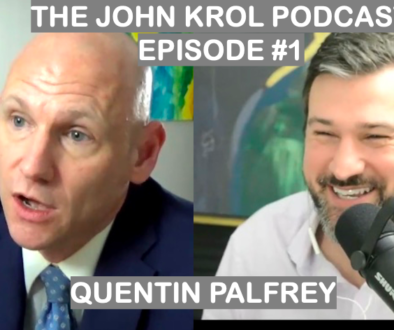Getting the Most out of Your Business’ Non-Profit Giving
 Yes, you want to be a good community partner. Your business benefits from the charities and non-profit organizations in your region, some of which employ your customers and clients. Some are cultural organizations that enhance the quality of life for you and your own employees, or more simply, these entities do good work and you want to support them through your business.
Yes, you want to be a good community partner. Your business benefits from the charities and non-profit organizations in your region, some of which employ your customers and clients. Some are cultural organizations that enhance the quality of life for you and your own employees, or more simply, these entities do good work and you want to support them through your business.
In fact, you may have (with your accountant’s approval) budgeted a certain amount for these donations. After all, they are tax-deductible expenses and there are ways that your business can benefit from the goodwill and other positive exposure for supporting non-profits.
But, many times it’s the donor who isn’t prepared enough to get the most out of their donation. Sure, you have a full page ad in the program, maybe your banner with your logo hangs at the gala dinner, or maybe you get an occasional “thank you to our sponsors…” and your business is named with the laundry list of others, as the audience glazes over waiting for this obligatory buzz kill to end.
The bottom-line is when your business decides to donate significantly to a non-profit organization, either for a special event, a capital campaign or for simple operating expenses, you need to provide a level of engagement that will make the investment worth it. If not, it’s bound to lead to disappointment which is not a good thing for the donor or the non-profit, since a bad experience could lead to the end of the giving relationship.
So, for businesses being approached by that savvy development director looking for a major donation, here are a few tips to start you on the way to a giving strategy that is more effective for your business.
1. Is it the right demographic?
Question the non-profit organization about their customers, clients or other donors to understand whether it is consistent with your own desired customer demographic. For example, those who attend and also donate to the non-profit world-renowned symphony orchestra may be the right crowd to target if you are a car dealer selling Mercedes and BMWs, but not if you only sell used Datsuns. These are the kinds of demographic details the non-profit should be sharing with you. If they don’t have these general figures available for you, then they’re off to a bad start and you should hold out until you see them.
2. The list of donor benefits should be a suggestion, not hard and fast.
When the non-profit comes to you with a list of standard giving levels and the benefits that come your way with each, don’t be afraid to go outside the sheet (so to speak). This is not to say you demand “Platinum” donor benefits for the “Silver” giving level. Instead, be creative and seek out other benefits. Conjure ways that your customers and their donors may overlap more closely align the message you are trying to convey in your support for the non-profit. Nationally we’ve seen some retail outlets donate a percentage of sales to non-profit causes, keep this in mind as you think of ways for mutual benefit.
3. Get involved and be a part of the cause.
In the case of a larger donation for a particular cause, increase the effectiveness of the charity campaign by allocating some of your business’s marketing staff, expertise and by simply being present. If you are the lead sponsor for a particular campaign, don’t settle for (and rely upon) the non-profit to give you credit when generating buzz and media attention for the cause. Instead, stand side-by-side with the non-profit representatives at media appearances like radio and television interviews. Understand and embrace the campaign so that you can be a spokesperson for it as well. Integrate your company’s role in the campaign into your own marketing activities, like in newspaper advertisements, radio and television ads, social media and more. All of this should be negotiated with the non-profit when the donation is agreed upon.
4. Go a step further, make it a fully co-branded effort.
If you’re really serious about getting a good bang for your donation buck, find a truly innovative way to bring success to the non-profit campaign, while truly differentiating your company. As your business considers making a major donation, think of ways to separate yourself from the typical donor list. Is it more effective, for instance, to have your business’s name next to ten other “Platinum” level donors on the annual dinner program, or to hold your own event to raise dollars? Or create a program where your company matches every individual donation up to a certain dollar figure. These are just a couple of the endless number of opportunities to create longer lasting positive exposure, enhanced through all forms of media, and word of mouth.
5. It is worth the time and energy to make your donations go further
Far too many companies ignore the previous steps and continue to cut checks without maximizing the potential positives. Again, that is not beneficial to anyone, including the non-profits that need the continued support from the business sector. If you don’t have the expertise in-house to execute the type of creative work highlighted in the previous examples, you ought to consider hiring a professional firm like OneEighty Media with a portion of the charitable giving budget. For instance, carving out 5-10 percent of the donation budget to ensure that it is allocated in a cost-effective way is well worth the investment. Remember, marketing expenses are also tax deductible and establishing a strategic giving plan will ensure that your business benefits with an enhanced reputation in the communities you serve.
President of OneEighty Media, Inc., John Krol serves as Director of Accounts and lead communications consultant for this full-service marketing, communications and advertising firm. John’s extensive experience in journalism, broadcasting, public relations, government relations, SEM, community outreach and marketing provides a unique perspective for businesses looking to re-energize and diversify their marketing efforts.



